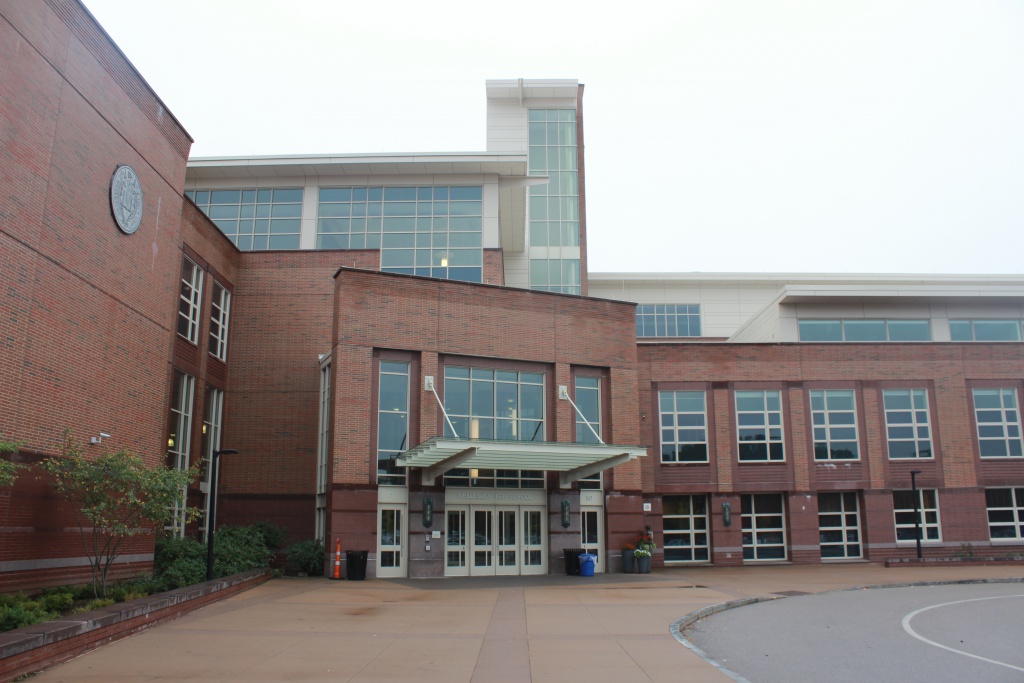I was more than happy to return back to school in a hybrid model after enduring two weeks of full remote learning, and I will be just as eager after coming back from winter break. Returning, however, also feels unsettling, not because I am worried for my health and safety, but because it means I will indirectly contribute to a larger problem in our state: educational inequality, exacerbated by the COVID-19 pandemic.
My worries about health and safety are alleviated by the data from the high school’s COVID-19 testing program and the many resources devoted to the implementation of in-person learning. I can receive the education I needed without fear. Wellesley, however, is one of the few public schools in the state—and nation—with such an extensive testing program. Even other districts in the Safer Teachers, Safer Students: Back-to-School Testing Collaborative, the testing initiative that Wellesley participates in, vary in testing capability.
Whereas the Wellesley Educational Foundation covered the costs of the $300,000 weekly testing program, which ends this year, and the $250,000 baseline testing program through private donations, finding funding in other districts for testing programs is a challenge.
“We don’t have the financial support that we need to make a testing program happen the way that it has in some of our more affluent neighboring communities,” said Revere School Superintendent Dr. Dianne Kelly in an interview with Boston 25 News.
The inability for certain districts, particularly those that include low-income communities of color, to operate testing programs and forms of in-person learning heightens existing inequalities in education that made Massachusetts, according to a 2018 report from the Massachusetts Education Equity Partnership, home to “glaring and persistent disparities in opportunity and achievement that separate low-income students and students of color from their peers.”
A recent survey of 1,550 parents of K-12 students from MassINC Polling Group, a nonpartisan public opinion research firm, found that parents who earn more and have college degrees are more likely to have a child participate in a hybrid learning model. Furthermore, for White families that make less than $75,000 a year, 49 percent have a child in fully remote learning.
On the other hand, 80 percent of Latino parents and 73 percent of Black parents that make less than $75,000 a year have a child in a full remote model, reflecting the disproportionate impact of the COVID-19 pandemic on communities of color.
Online learning can be effective, but is possible only “if students have consistent access to the internet and computers and if teachers have received targeted training and supports for online instruction,” according to the Economic Policy Institute. Given the existing educational disparities in the state, it is not feasible that all students are receiving high-quality online learning, thus hindering their education.
In my experience, an in-person setting fosters an environment more conducive for productive and effective learning. I don’t experience Zoom fatigue, a heightened sense of exhaustion as a result of staring at electronic screens for hours on end. The ability to socialize with peers, see friends, and feel a sense of normalcy in a hybrid model helps maintain my social and emotional wellbeing, allowing me to better learn. When I go into the high school, it is undoubtedly easier to stay engaged and receive help from teachers.
Furthermore, the extensive testing program allows the hybrid model to continue, ensuring that all these benefits are sustained, not just for me, but for the thousands of students, ranging from elementary schoolers to fellow high schoolers, in the district participating in a hybrid model.
I do not take this opportunity for granted. I am extremely grateful for the testing program and its ability to allow in-person learning to continue. As we progress with hybrid learning, however, there are hundreds of thousands of other students in Massachusetts that have had their learning significantly disrupted. Complacency or failure to acknowledge our privileged position as students in Wellesley contributes to widening inequality in our state.
In an unprecedented and stressful year, it may seem arbitrary to devote attention to the circumstances of other places when there is already so much that we are preoccupied with.
However, commitment to equity is a core value of the Safer Teachers, Safer Students: Back-to-School Testing Collaborative and commitment to community is one of our district’s core values. We as students, therefore, who are indirectly part of the collaborative (as participants in Wellesley’s testing program) and directly part of the district, must hold this commitment.
This year, we have seen how inequities plague our country. As 2020 comes to an end, I urge fellow students to join me and close out the year with critical reflection about our role as students and what we can do about inequalities and inequities in our education system. What is WPS doing to support its neighbors? How can we advocate for expanded testing statewide? How can we, not just as students but as citizens, materialize our reflections and turn them into action, upholding our district’s core values?


Hi Howard,
Thanks for the comment! The weekly testing program costs $300,000 as a total, not per week, and the funding lasted up until winter break. This program costs about $25-30,000 per week. The funding for that program and the baseline program were both funded through private donations (probably from parents, alumni, businesses, etc.). With the new year, I’ve heard that some public funds from the town might be allocated to sustain future testing programs. However, I’m not as sure about where new funding is coming from.
Best,
Ian
Hey Ian,
Great article! The testing program’s cost really stood out to me: even though the school pools tests, does the program still cost $300,000 a week? On that note, where does WEF even get the money to fund the program?
Howard